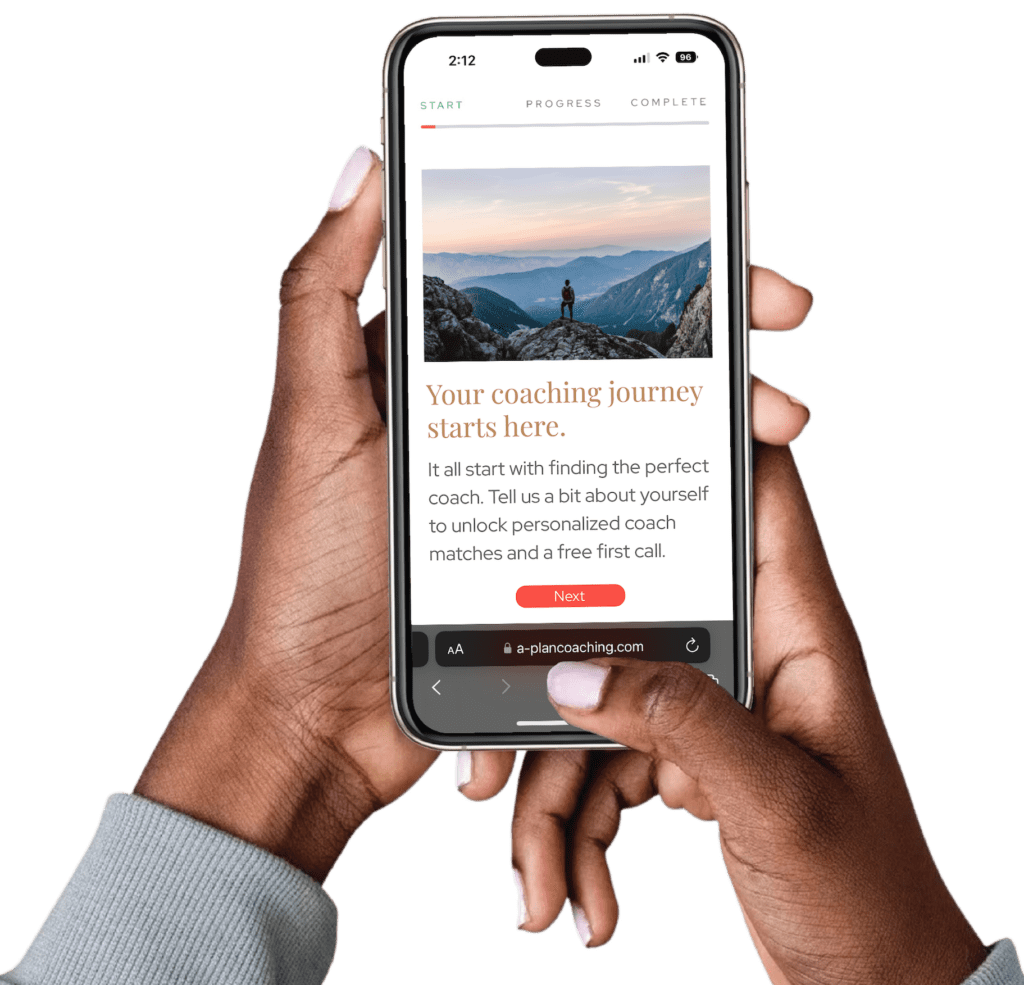Jump to section…
- The Importance of Effective Coaching for Small Business Success
- Warning Sign #1: Lack of Clear Business Goals
- Warning Sign #2: No Measurable Action Plans
- Warning Sign #3: Neglecting Cash Flow and Financial Planning
- Warning Sign #4: Ignoring Team Dynamics and Culture
- Warning Sign #5: Absence of Metrics and Accountability

Effective leadership is the backbone of any successful business. Whether you’re a small business owner launching a startup or an experienced entrepreneur scaling your own enterprise, strong leadership skills can make the difference between stagnation and exponential growth.
That’s where small business coaching services come in. These programs are designed to refine your business skills, strengthen your team alignment, and help you create actionable steps for business growth.
But what happens when coaching falls short? This blog explores five warning signs of ineffective business coaching programs. By recognizing these red flags and implementing practical solutions, you can ensure your coaching efforts drive meaningful results, both for your leadership skills and your bottom line.

Interested in Small Business Coaching Services?
The Importance of Effective Coaching for Small Business Success
Small business coaching services provide a combination of mentorship, tools, and actionable strategies tailored to your business needs. The benefits of these services extend across multiple dimensions of your enterprise, including business operations, team collaboration, and financial planning.
According to a report by the International Coaching Federation (ICF), organizations that invest in leadership coaching achieve an average return on investment (ROI) of seven times what they put in. These programs are particularly impactful for small and medium-sized enterprises (SMEs), where leadership plays a direct role in shaping business operations and achieving next-level success.
Coaching Impacts on Business Success
- Improved Team Performance: Effective coaching nurtures human resources by fostering a positive team culture.
- Financial Growth: Insights on cash flow and pricing strategy ensure you’re maximizing profits.
- Clearer Roadmaps: Structured goals and action plans keep your business mentoring initiatives on track.
However, not all coaching delivers these outcomes. Ineffective coaching can hinder business development, stall your entrepreneurship efforts, and jeopardize your bottom line. Identifying ineffective coaching early is crucial to preventing wasted resources and unfulfilled potential.
Let’s consider some warning signs of ineffective small business leadership coaching to watch out for. By addressing these five warning signs proactively, you can steer your coaching investment back on track.
Warning Sign #1: Lack of Clear Business Goals
Why It’s a Problem
Effective coaching begins with clarity. If your coaching sessions feel aimless or lack a structured business plan, you’re unlikely to see real progress. This often leads to frustrations, wasted time, and stagnation in achieving business growth.
Coaching without specific business goals is like wandering through a dense forest without a map. Every decision made in your business should tie back to clear, actionable objectives.
An Example of Structure
A scalable coaching methodology might look like this:
- Set SMART Goals (Specific, Measurable, Achievable, Relevant, Time-bound).
- Prioritize objectives tied to specific key performance indicators (KPIs), such as increasing revenue by 15% or reducing turnover by 20%.
- Schedule coaching sessions around these goals.
Actionable Takeaway
Use this SMART goals template:
- Specific: Define a single goal clearly (e.g., “Enhance customer conversion rates”).
- Measurable: Quantify it (“Increase by 10%”).
- Achievable: Ensure feasibility given resources.
- Relevant: Connect it to overarching business needs.
- Time-bound: Set a deadline.
Warning Sign #2: No Measurable Action Plans
Why It’s a Problem
Insights from coaching are useless without well-defined action plans. A vague coaching approach often leaves coaching clients feeling stuck, unsure how to apply guidance to their business experience. Small business consulting requires bridging the gaps between advice and action.
Effective Action Plan Example
Problem Identified: Website conversion is low.
Action Plan Steps:
- Audit your website with an expert.
- Optimize for SEO (utilize social media-friendly content).
- Deploy performance tracking tools, such as Google Analytics.
Vague Strategy Example: “Work on website improvements” (lacks specifics and measurable steps).
Actionable Takeaway
Break goals into measurable steps. For instance, if your objective is to improve employee retention:
- Conduct a team survey on satisfaction levels.
- Analyze results to pinpoint dissatisfaction areas.
- Implement changes (e.g., flexible working hours or additional training modules).
- Measure results monthly.
Warning Sign #3: Neglecting Cash Flow and Financial Planning
Why It’s a Problem
Small business coaching without financial insights is like running an engine without fuel. If your coaching program overlooks critical aspects such as cash flow, pricing, or budget planning, the long-term viability of your business is at risk.
Remember: cash flow blunders are a leading cause of failure for 82% of small businesses.
Blind Spots to Avoid
- Overlooking operational costs in e-commerce or service industries
- Pricing products/services without factoring in competition or customer acquisition costs
Actionable Takeaway
Use this cash flow checklist to optimize finances with your coach:
Track all income sources over 6 months.
List recurring expenses (fixed and variable).
Forecast profits using conservative estimates.
Adjust your business plan quarterly to align financial goals with market trends.
Warning Sign #4: Ignoring Team Dynamics and Culture
Why It’s a Problem
Leadership coaching isn’t just about the numbers; it’s also about people. Yet some coaching programs neglect human resources dynamics, leading to dysfunctional team alignment and high turnover. A positive organizational culture is essential for retaining talent and solving internal conflicts.
Key Coaching Focus Areas
- Fostering Diversity, Equity, and Inclusion (DEI)
- Improving team collaboration through group coaching
- Developing conflict-resolution strategies
Actionable Takeaway
Here’s a quick framework to build a positive team culture:
- Schedule monthly team workshops for open communication.
- Implement DEI goals that align with the company’s values.
- Gather anonymous feedback to uncover hidden issues.
Warning Sign #5: Absence of Metrics and Accountability
Why It’s a Problem
Without clear metrics for success, it’s impossible to determine whether your coaching investment is yielding tangible results. The absence of tracking tools or accountability mechanisms can undermine your entire business coaching program.
Metrics to Monitor
- Revenue growth percentage
- Employee satisfaction scores (via surveys)
- Individual performance measured through KPIs
Best Practices for Tracking
- Use dashboards to visualize metrics.
- Request monthly evaluations from your coach.
- Incorporate feedback loops that include testimonials from your team or stakeholders.
Actionable Takeaway
Schedule a quarterly strategy session with your coach to align on measurable goals and review progress. During these sessions, use structured agendas to evaluate key metrics, such as revenue growth, employee satisfaction, and individual performance, against established KPIs. This not only reinforces accountability but also ensures continuous improvement throughout your coaching program.
Coaching That Makes a Real Difference
Looking for a life coach, executive coach, or team coaching program? At a)plan, our tailored, scalable business coaching sessions are designed to drive business needs with measurable results.
Take your new business to the next level by partnering with expert coaches who guide you toward meaningful growth, success, and a refined skill set. Get in touch with a)plan today to achieve your goals!

Interested in Small Business Coaching Services?
